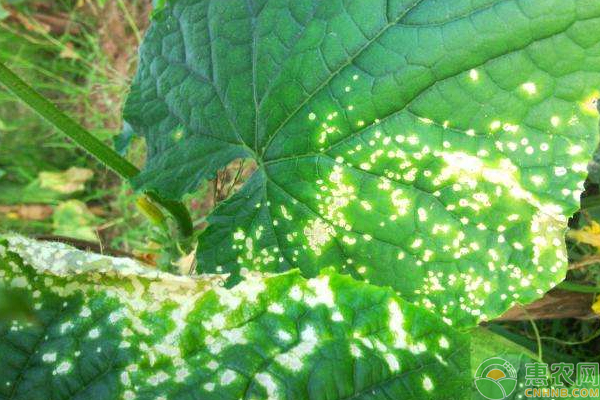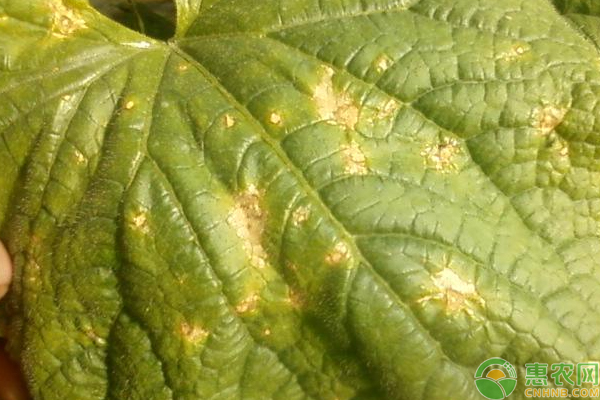Target spot disease is one of the diseases of cucumber planting. At present, high temperature weather is also the best time for this disease to occur. Therefore, we need to carry out reasonable control when planting cucumber, otherwise it will lead to reduced yield of cucumber. The following is a detailed control technique for cucumber target spot disease, which growers look at.

The cucumber target spot disease is a disease caused by the cucumber target spot disease, and the taste occurs in a warm, high-humidity season. The symptoms of the disease are very similar to downy mildew and bacterial keratosis. The grower should pay attention to the fact that if the judgment is incorrect, the prescription can not be correct, which will lead to serious consequences.
Harmful symptoms
The field is mainly harmful to the leaves, and the middle and lower leaves are seriously damaged. The leaves are initially light brown round lesions, which turn brownish green and have a diameter of 6 to 12 mm. The lesions are irregularly shaped by the veins, and some of them are grayish-white to gray-brown, and gray-black moldy on the lesions. In severe cases, the lesions fuse and the leaves die. Protected cultivation, mostly in the early stage of picking melon, is limited to individual greenhouses and individual plants; entering the late stage of melon, the disease spreads rapidly, the degree of disease is aggravated, causing some cucumbers in the shed to pull in advance.
Law of onset
First, the onset of the disease. Protection and cultivation are mostly seen in the beginning of the picking period, limited to individual greenhouses and individual plants; in the late stage of the melon, the disease spreads rapidly and the degree of disease is aggravated, causing some cucumbers in the shed to pull in advance. The spring protection area generally begins to develop in mid-March, and the disease rapidly expands after mid-April, reaching the peak incidence in mid-May.
Second, the climate factor. High humidity or poor ventilation and ventilating conditions are prone to morbidity; temperature is 25 ~ 27 ° C, humidity is saturated under the condition of heavy disease; large temperature difference is also conducive to the onset.
Third, cultivation factors. The soil is fertile, the bottom fertilizer is sufficient, the cucumber plants grow robustly, the target spot disease occurs lightly; the fertility is insufficient, the soil is poor, the plant growth is weak, the leaves are yellow, and the texture is thin, the incidence is serious. Large-water flood irrigation, untimely release of wind, the field with high humidity in the field, often the incidence is heavier; the incidence of buffer room and aisle near the protected area is significantly lighter; after the flood, the disease is heavy. The pathogens overwinter with conidia or mycelium on the diseased bodies in the soil. The pathogen is spread by airflow or rainwater splashing for initial infection and reinfection.

Disease pathogen
The pathogen is Corynespora cassiicola (Berk. & Curt.) Wei.
First, the form. After culturing on a PDA plate for 5 days, the colony diameter was 2 to 2.8 cm, and the color became darker in the range of 0.1 to 0.2 cm in the center, which was light brown, and the hyphae grew tightly and protruded upward, while the colony was light in color and loose in growth. After 8 days, the colony color was obviously deepened, the center was yellowish brown to dark brown, followed by light brown, and the periphery was white to grayish white. The whole colony grew more evenly, and the mycelium was fluffy or hairy. After 10 days, the colony diameter can reach about 10cm. The mycelium is colorless, with branches and septa. Conidiophores are straight or buckling, light brown, unbranched, separated, sometimes enlarged at the base, and the size is 100-850 μm × 4-11 μm. Conidia terminal, light brown, often solitary, a few 2 to 6 string, bar-shaped or barrel-shaped, wall thick, base enlarged, top blunt, 10 to 20 diaphragm, size (39.6 ~ 164.8) μm × (11.8 to 17.2) μm.

Second, the characteristics. The growth temperature is about 30 °C, the sporulation temperature is 25 °C, and the conidial germination temperature is 30 °C. Spore formation and germination require high humidity. Light can promote the growth of hyphae. Pathogen growth and spore germination have a pH of 5-6, but have an inhibitory effect on spore production.
Third, the host. This pathogen can infect a wide range of hosts, and it is harmful to more than 20 kinds of vegetables such as cruciferous, cucurbitaceae and Solanaceae.
Agricultural control
Planting fields and non-cucumber vegetables are rotated for more than 2 years. Avoid partial application of nitrogen fertilizer, increase application of phosphorus and potassium fertilizer, and apply boron fertilizer in an appropriate amount. Rational irrigation, protection of the wind and moisture, reduce the chance of condensation, create a temperature and humidity conditions conducive to the growth and development of cucumber is not conducive to the germination and invasion of the bacteria. Early removal of diseased leaves. After the cucumber is pulled, the field sickness is removed.
Reference agent (disease period)
1, 60% azole ether · Daisen water dispersion granules (low toxicity) using 60-100 g / a spray
2, 22% azoxystroxazole suspension (low toxicity) using 27-32 ml / a spray
3, 30% benzene azoxystrobin suspension (low toxicity) using 30-50 ml / a spray
4, 300 g / liter of benzoyl propyl azole cream (low toxicity) using 20-30 ml / a spray
5, 40% behenyl ether ester wettable powder (low toxicity) using 2200-3700 times spray
6, 30% enoyl imipenem suspension (low toxicity) using 600-800 times spray
7, 400 g / liter of ethiazole / prochloraz aqueous emulsion (low toxicity) using 1000-1500 times spray
8, 12.5% ​​nitrile bacteria, prochloraz cream (low toxicity) spray with 600-800 times
9, 45% Pycnonidazole wettable powder (low toxicity) using 1000-2000 times spray
10, 70% propyl carbendazim WP (low toxicity) using 1000-1500 times spray
11, 45% phenyl ether · methyl sulfide wettable powder (micro-toxic) using 600-800 times liquid spray
12, 55% benzene, manganese and zinc wettable powder (low toxicity) using 1200-1800 times spray
13, 50% benzophenone zinc wettable powder (low toxicity) using 1800-2200 times spray
14, 75% sputum · tebuconazole water dispersion granules (low toxicity) using 4000-6000 times liquid spray
15, 60% Phenson·hexazolol water-dispersible granules (low toxicity) Spray with 1500-1750 times
16, 20% thiabend copper suspension (low toxicity) using 83.3-166.6 g / a spray
17, 35% fluorobacteria · tebuconazole suspension (low toxicity) using 20-25 ml / a spray
18, 42.8% fluorobacteria·valproate suspension (low toxicity) using 15-25 ml / mu spray
19, 35% Benzene · Prochloraz aqueous emulsion (low toxicity) using 60-90 ml / mu spray
Cucumber is one of the vegetables that people like to eat, and it is grown in almost every household in rural areas. It is also the vegetable category that many vegetable farmers prefer to grow, but the target spot disease has a great influence on cucumber. If it is not properly controlled, it will affect the quality of cucumber. And the production, do not care about the growers.
Hologram Anti-counterfeit Labels
Hologram Anti-counterfeit Labels,Hologram Anti-counterfeit Label,Anti-counterfeit Labels,Anti-counterfeit Label
Wenzhou Haoshi Light Industrial Products Co., LTD , https://www.economicseals.com